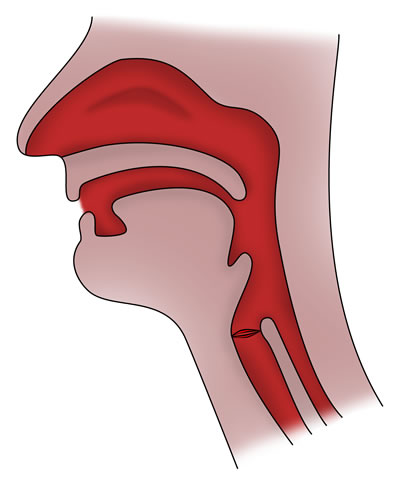A
INTRODUCTION
Airway management takes priority in the resuscitation of children and adults as prompt recognition and management of the obstructed airway will help prevent further deterioration and secondary problems due to hypoxia. The respiratory function in children can become compromised much more quickly than in adults so the speed at which a patent airway is established is very important. It is also essential to remember that there are differences between the paediatric and adult airways which affect how the airway is managed. It is vital that the techniques for ensuring a patent airway are learnt and the appropriate adjuncts are used.
Recognition
- Assess patency by
- looking for chest and/or abdominal movement –
- listening for breath sounds and
- feeling for expired air.
- Vocalisations, such as crying or talking, indicate ventilation and some degree of airway patency.
- Paradoxical chest and abdominal movements
- Signs of airway obstruction?
- Foreign body visible?
- Fully obstructed airway will be silent
- Cyanosis/hypoxia is a late sign
Response
- Call for help if signs of airway obstruction
- Basic airway manoeuvres
- Older child: Head tilt, chin lift
- Infant: neutral position
- Jaw thrust
- Airway adjuncts
- Oropharyngeal airway
- Nasopharyngeal airway
- Suction secretions (Yankauer)
- Give oxygen (O2) if required to maintain saturations of 94-98%
- Call an anaesthetist for definitive airway management
Table: Airway Recognition and Response

